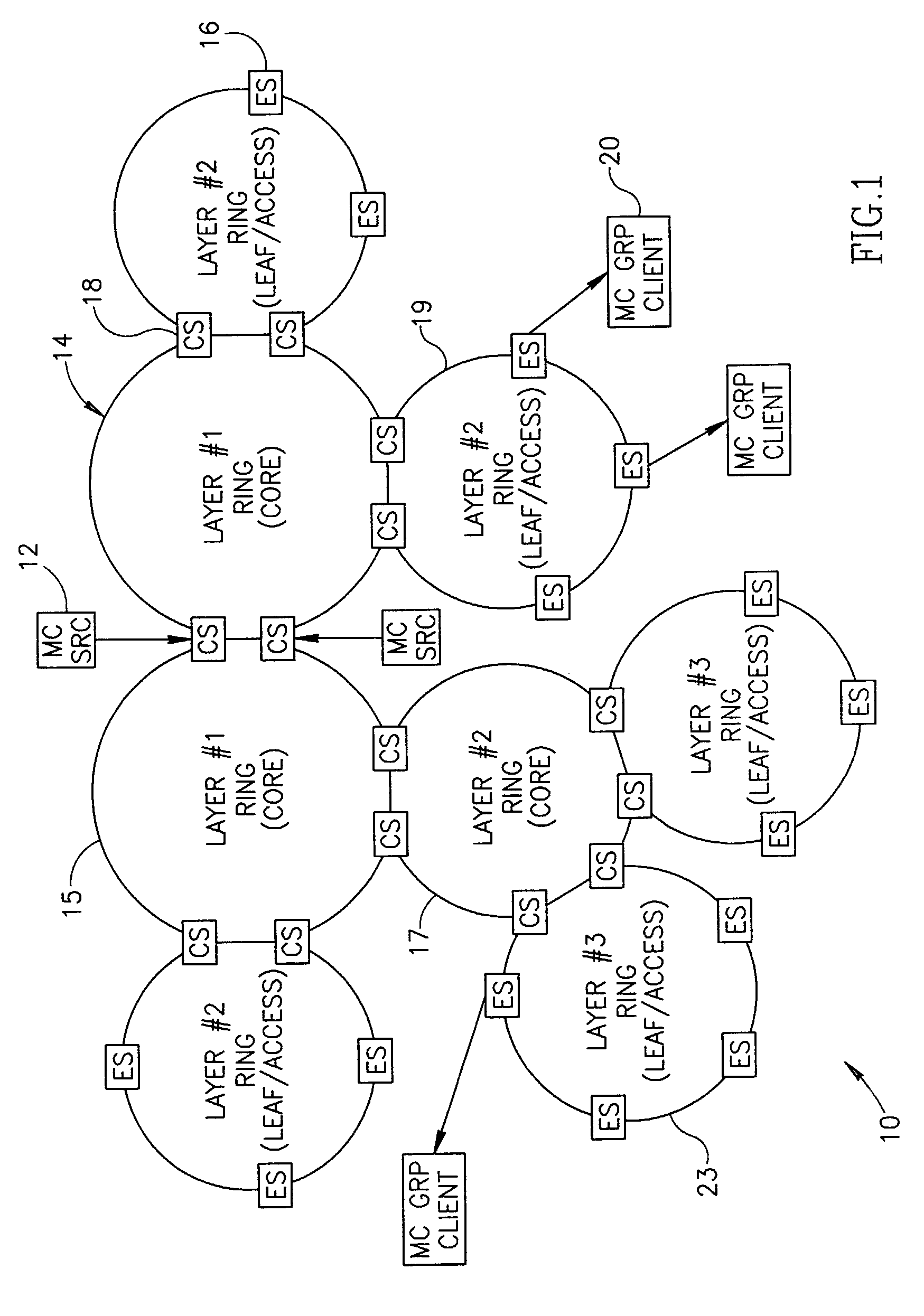Scalable protection mechanism for hierarchical multicast service in ring based networks
a protection mechanism and hierarchical multicast technology, applied in the field of data communication, can solve the problems of large number of unicast connections, inability to support most networks, and inherently slow reroute mechanisms than protection switching mechanisms
- Summary
- Abstract
- Description
- Claims
- Application Information
AI Technical Summary
Benefits of technology
Problems solved by technology
Method used
Image
Examples
embodiment
Network Device Embodiment
[0124]A network device can be adapted to implement the fast protection mechanism of the present invention. Hardware means and / or software means adapted to execute the mechanism may be incorporated within a network device such as a core switch, edge switch, Network Management System, Label Switching Router (LSR), network switch or any other wired or wireless network device. The device may be constructed using any combination of hardware and / or software.
[0125]A block diagram illustrating an example network device incorporating the multicast protection mechanism of the present invention is shown in FIG. 12. The network device, generally referenced 240, comprises at its core a network processor 260, link interface cards 256, 262, a network interface 252 for interfacing the network device to an NMS 253, a central processor 242, e.g., CPU, and both volatile and non-volatile memory including RAM memory 248 for storing data and application program code, Flash memory...
PUM
 Login to View More
Login to View More Abstract
Description
Claims
Application Information
 Login to View More
Login to View More - R&D
- Intellectual Property
- Life Sciences
- Materials
- Tech Scout
- Unparalleled Data Quality
- Higher Quality Content
- 60% Fewer Hallucinations
Browse by: Latest US Patents, China's latest patents, Technical Efficacy Thesaurus, Application Domain, Technology Topic, Popular Technical Reports.
© 2025 PatSnap. All rights reserved.Legal|Privacy policy|Modern Slavery Act Transparency Statement|Sitemap|About US| Contact US: help@patsnap.com



